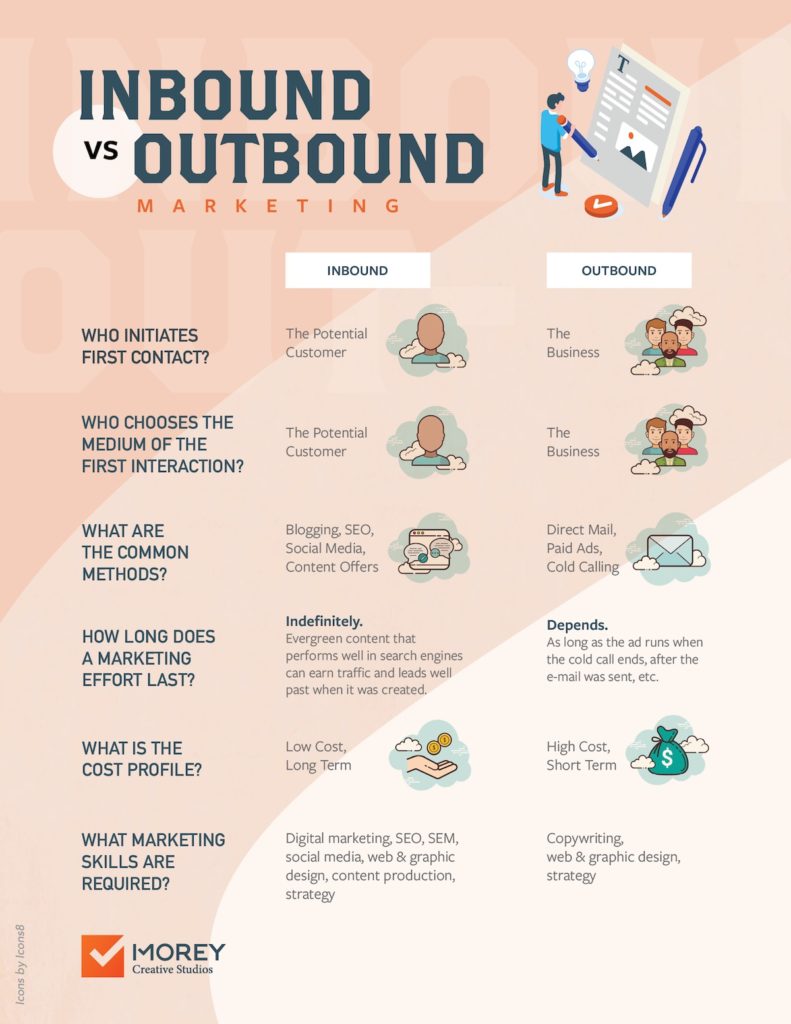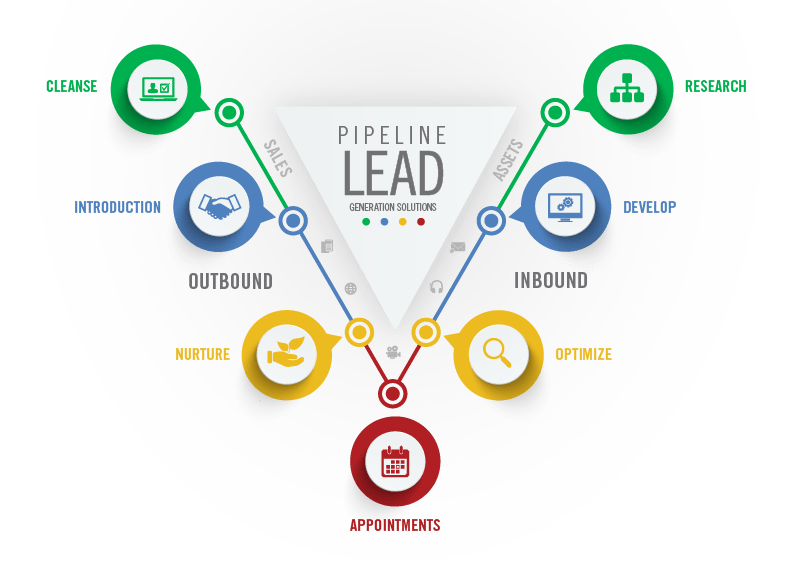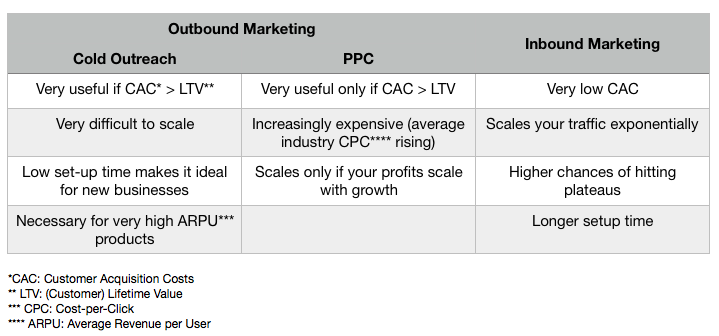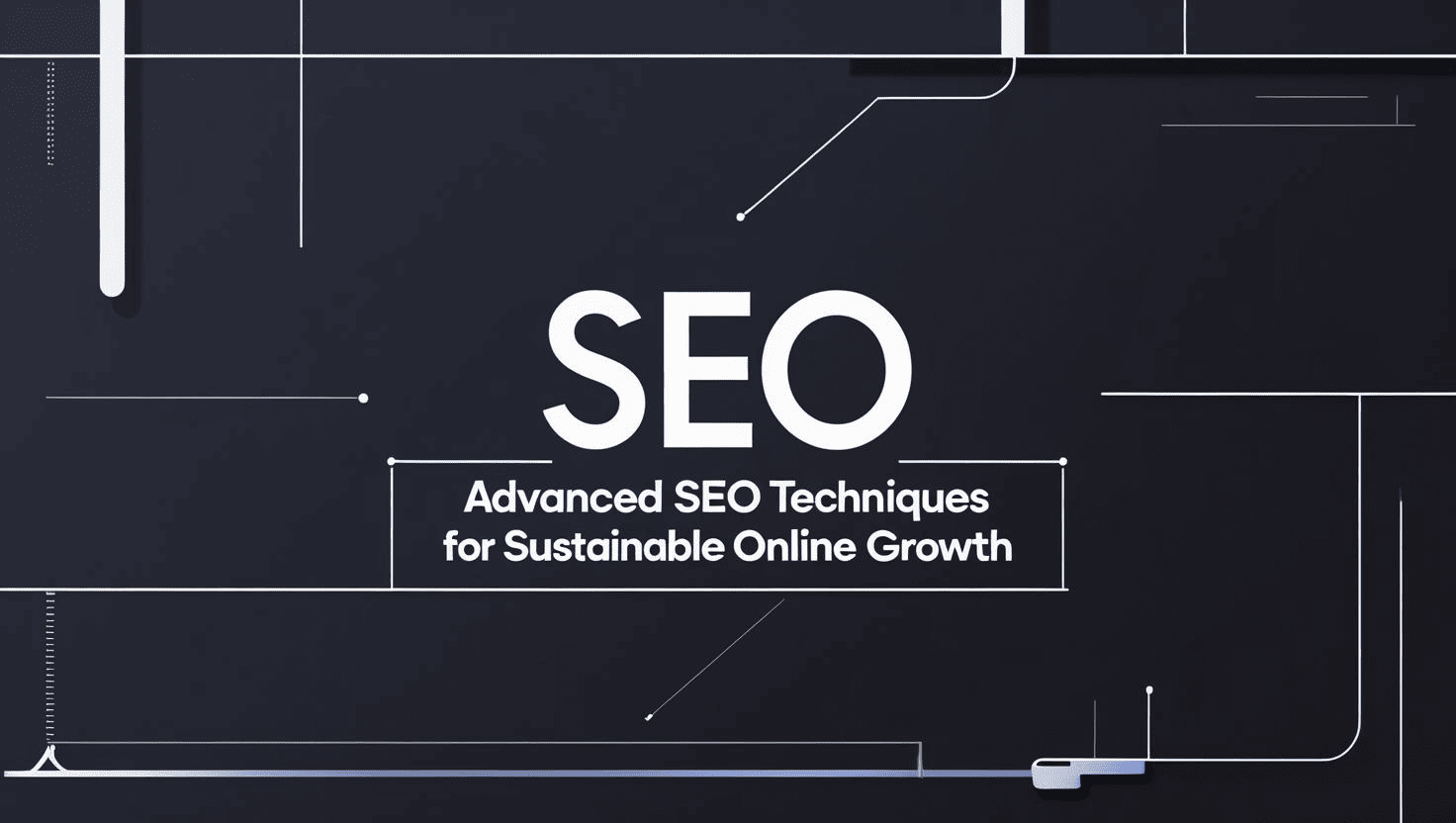
What you need to know about Outbound Marketing
I’ve recently detailed the ins and outs of Inbound Marketing and created a template for building a powerful Inbound growth engine. In this post, we’re going to explore the other side of the count – Outbound Marketing.
Table of Contents
- What is Outbound Marketing?
- Introduction to Lead Generation
- Cold Outreach
- How does Cold Outreach compare to Inbound Marketing?
- PPC (Paid Advertising)
- Cold Outreach vs. PPC vs. Inbound Marketing
The aim of this post (and the rest of the series) is to give you a rock-solid foundation on how to design and build a growth program that scales. Rather than doubling down on any one method, diversifying your growth channels is the key to building sustainable, predictable growth.
Let’s get started.
What is Outbound Marketing?
There’s often a lot of confusion around what the difference between Inbound and Outbound marketing is. One easy mnemonic to follow is Inbound Marketing involves “drawing in” Outbound Marketing is all about “reaching out”.
Inbound is frequently referred to as permission based marketing – using a combination of product, content & ancillary value to draw your customers in.
Outbound Marketing, on the other hand, is far more direct: it’s about broadcasting your product & services to the world, often via direct customer outreach. An easy analogue that might help explain the difference would be Brand Building vs. Direct Sales.

Inbound Marketing vs Outbound Marketing
Outbound Marketing can be a lot of different things. The two big ones we’re going to cover:
- Cold outreach (cold emails, cold calls, etc.)
- PPC* (This is hotly debated as wether it is or not an “Outbound” method – more on this later)
Introduction to Lead Generation
Before we dig into cold outreach, we need to talk about Lead Generation. The first step of doing cold outreach is to build a contact database of potential customers (be it email, phone numbers, or both).
There’s several different ways to do Lead Generation – far beyond the scope of this article. However, here are a few tried and true tools:
- Linkedin Sales Navigator: The holy grail of lead generation. Although pricey (upwards of $100/mo), LinkedIn Sales Navigator gets you access to powerful lead generation tools within LinkedIn. You can run extremely granular searches to find exactly the kind of people you’re looking for. You can then use something like snov.io to get emails of any search query you run.
- hunter.io was once the gold standard of lead generation, letting you easily generate email lists from LinkedIn. After LinkedIn banned them, they had to rework their model and continue to remain a highly reference tool – for very affordable rates, you can enter the name of any company and get a list of emails of people that work there.
- ConvertKit is a great tool that lets you create what are called “lead magnets” – essentially, small widgets in blog posts or landing pages to collect emails of potential visitors. Although it’s in the grey area between Inbound and Outbound, you can take those emails and run cold outreach campaigns.
Lead generation is the first step of Outbound Marketing. The average salesperson spends nearly half of their time finding leads and adding them to their CRM – it’s important you learn the ins and outs, as well as the necessary tools.
Also, with the advent of new privacy regulations like the General Data Protection Regulations (GDPR), it’s important to know who you’re cold emailing and what the regulations are around it.

Get our Comprehensive “Inbound Marketing Plan” Template.
Fast-track your Inbound Marketing strategy with our meticulously designed, premium tool.
Visit our homepage to explore more about this indispensable asset!
Cold Outreach
So you’ve generated a nice list of emails and phone numbers in your go to CRM. What now? This is where we get into the core of Outbound Marketing: Cold Outreach.
Here are the basic steps to running a successful cold emailing campaign.
Cold Outreach is any kind of human-to-human outreach with people you don’t have a previous connection with. This can be anything from direct messages on social media to cold calls. In this day and age, cold emails are the most popular way to get started.
- Use an automated, drip-emailing service like Aweber;
- Create email sequences with multiple emails – the average lead requires 5 different touch-points to convert into a customer;
- Follow up with engaged users with a quick phone call and move them down the sales funnel.
Then rinse and repeat and go back to the lead generation step. Simple, right? Cold emailing can be a powerful strategy for growing your business, especially early on – but it has it’s negatives.
Pros
- Great for early stage businesses. Minimal setup time with all the available tools out there.
- Manually guide users down the sales funnel. Don’t need to build out complicated Inbound mechanisms – hand-hold a potential lead into buying.
- Learn about your business. It’s a perfect way to refine the messaging of your product, by noticing what resonates with your leads, and adapting after-all, as well as build relationships that can improve your offering and service delivery.
Cons
- Hard to scale. Although new tools try to automate cold email, it’s inherently unscalable and quickly loses out to other tactics (like PPC (pay-per-click) in the long run.
- Not worth the time for low ARPU (average revenue per user/customer) products… only really useful if every potential customer is worth a decent amount of revenue to you.
- Hard to crack and often demoralizing – you need to send dozens, often hundreds of emails just to find a single customer.


The fact is, cold outreach can be a powerful growth engine, but it’s usually only useful in 2 scenarios:
- You have a large product, with a very high ARPU (think enterprise services);
- You’re a new business trying to get initial traction. For most online businesses, cold outreach loses it’s appeal shortly after lift off.
So, how does Cold Outreach compare to Inbound Marketing?
If you’re comparing the effectiveness of cold outreach to standard inbound techniques like blogging, content marketing, newsletters and social media, it doesn’t come out very favorably.
Cold emailing will certainly get results quicker than these techniques, however it loses it’s effectiveness very quickly and is not a viable long-term option for most businesses.
Get our Comprehensive “Inbound Marketing Plan” Template.
Fast-track your Inbound Marketing strategy with our meticulously designed, premium tool.
Visit our homepage to explore more about this indispensable asset!
PPC (Paid Advertising)
Remember we stuck an asterisk on paid advertising as an outbound technique earlier? Many people argue back and forth on whether PPC is technically an Inbound or an Outbound method.
On one hand, you’re directly broadcasting to a targeted group of people with your message… but on the other hand, what’s the difference between a Google display ad and just having a piece of content that ranks?
I argue that PPC techniques are indeed Outbound Marketing.
The fact that if you turn off the PPC’s campaign budget, the results will stop (your ad will not appear in front of your audience), tilts this method towards Outbound. In Inbound, if you cut the budget off, your content will still be found by your audience, and your results do not stop, when the budget stops. Inboud lead generation maintains “momentum”.
There’s a lot of details that go into PPC, far more than we can go into in this article. I’ll write another article that goes into PPC details.
Cold Outreach vs. PPC vs. Inbound Marketing
So how do Outbound Marketing techniques compare against Inbound Marketing, and where should you be investing your time? Well, here’s a general overview to help you out:

Outbound Marketing techniques are a great way to get an instant influx of customers and get traction – but they don’t scale very well, and are not a reliable long-term growth engine.
Inbound Marketing, on the other hand, is built to scale – although it might take some time to start seeing the fruits of your labor, those growth gains compound and stick around for a long time.
For most online businesses, Inbound Marketing should be your bread-and-butter, and Outbound Marketing should be a catalyst to break through plateaus or get your early users.
Hopefully this guide has been useful for you – next in our series, we’ll do a deep dive into making PPC work for you.
Get our Comprehensive “Inbound Marketing Plan” Template.
Fast-track your Inbound Marketing strategy with our meticulously designed, premium tool.
Visit our homepage to explore more about this indispensable asset!
Share now :

